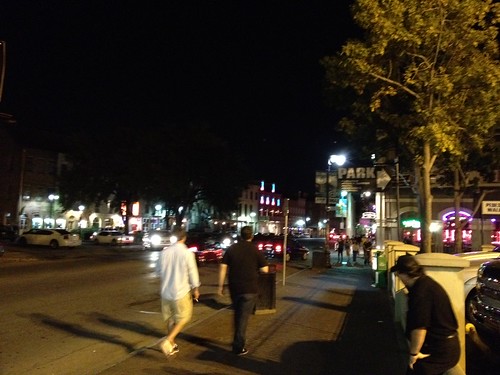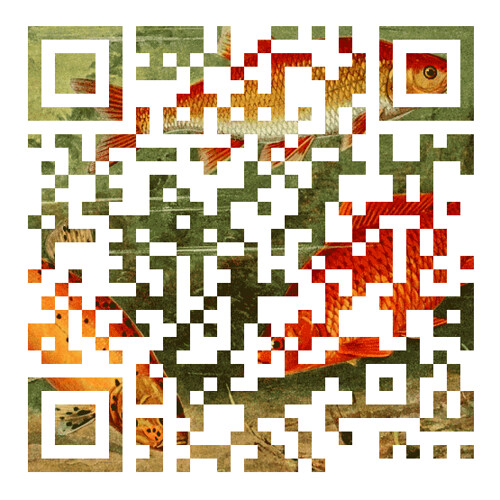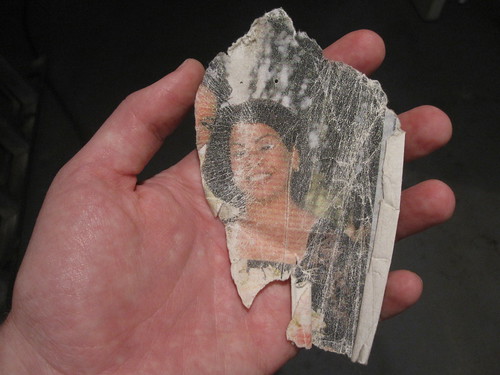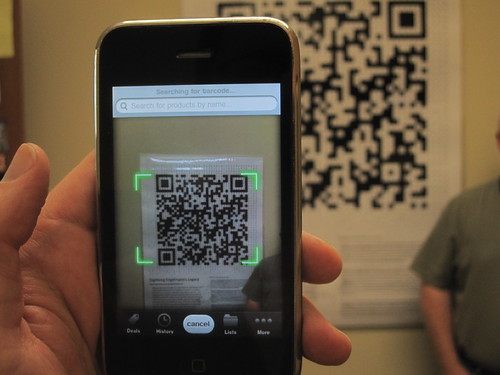I think the purposeful gamification of BHL would be a huge opportunity to make BHL an even richer resource. Other digital libraries are taking this approach. The National Library of Finland leads the pack with its "DigitalKoot" project, which features different Facebook apps that have players rekey suspect text in OCR via games that, in one example, builds bridges for moles to find love. I've played them. They're kind of fun. I've ended up killing a lot of lonely moles because I don't have the right characters on my US keyboard.
You could imagine BHL putting its OCR into the same games for improvement. But I actually want something else - I want offline games. DigitalKoot runs through Facebook, so I have to be connected to play. I travel internationally, so I spend a lot of down time on planes and I turn off data roaming on my iPhone whenever I reach my destination because it's incredibly expensive. Who the heck wants to spend hundreds of euros rekeying Finnish OCR? But if I had an offline game, one that didn't require me to always be connected to the Internet, I could spend LOTS of time doing this kind of purposeful gaming.
I was asked to expand on this idea a bit today while in Brussels for a BHL-Europe meeting. I was finally able to put it together in a way that made sense for people - I want a game like Angry Birds that I can play while I'm standing in a long grocery store line, or flying, or on a train...basically any time that I have some spare cycles.
And when I described this as "spare cycles" it brought me full circle to a project we did in 2005 called SciLINC ("Scientific Literature Indexing on Networked Computers", my best acronym ever, thank you very much). SciLINC was a project that used the BOINC framework, which is open-source software for volunteer computing and grid computing, to find scientific names in literature, preceeding our work with TaxonFinder. The BOINC platform grew out of the SETI@Home project, where users downloaded software that ran as a screensaver and used the spare cycles of an unused computer to crunch through radio waves looking for signs of extraterrestrial life, and then reported the results back to a main server when the computing job was done and when it had a live network connection.
In the SciLINC project we packaged up OCR text and sent it to volunteer computers along with an algorithm for finding scientific names. It was a wonderful demonstration, but we ran out of jobs in about 2 days because text indexing isn't processor intensive; the best BOINC projects take small inputs that require lots of computing resources. Lessons learned (final report here, & appendix). In doing the project I gained an understanding of how jobs are packaged for distribution to volunteers and the kinds of inputs and outputs that are successful in an asynchronous computing environment.
So to bring this all together, I want a gaming system that improves the metadata in BHL. I want it to be asynchronous and offline so that I can play the game using my own spare cycles (time & brainpower) whenever & wherever and then upload my results to the "game master" when I'm next connected. To do that requires that the system sends me packages of data that don't wreak havoc on a mobile data plan (small inputs), but that give me enough tasks to work on with all of my spare cycles on planes. The tasks have to result in improvements in BHL, not just throwing birds at pigs. And it has to be fun. And it should probably have a killer soundtrack (Tetris, anyone?).
Who's with me?
***Update Sep 26, 2013*** It was announced today that BHL, through Missouri Botanical Garden, received a National Leadership Grant for Libraries from the Institute of Museum and Library Services for a project to develop & evaluate purposeful gaming techniques for crowdsourced metadata enhancement. Kudos to the team for operationalizing these ideas!!






We left the platform and walked more than a block before crossing the street to return to our hotel, passing more memorial signs, and were stopped by a traffic light. I pushed the "Walk" button on the post and stopped to look at the sign taped above it. Staring back was a smiling woman and her sister, or maybe close friend. They very clearly had a bond because of the way they were standing together. The sign was weathered and torn, as if it had been posted for a long time. Many of the other homemade signs and color printouts we had seen on display were newer and labeled "In Memoriam" but this was clearly older and posted with "MISSING" in big, black letters along the top. I knew that woman's family, maybe the other woman in the picture, had made this in hopes of finding their wife/sister/mother/daughter in the days after 9/11. Because the sign was weathered it was starting to tear away from the tape on the post, and I could see the ripped edges fluttering in the winter breeze. When we were standing in line we had overheard two women talking about how every few weeks some municipal authority (Streets or Port Authority, maybe even Refuse) gathered the signs and trinkets left at the site; some were kept for archival purposes but the vast majority were taken off-site and burned.
Without thinking, I reached out and tore off the piece of the sign that was freed from the tape, about to blow away on its own in the wind. A woman standing behind me gasped, as if by tearing the sign I was somehow interfering with the woman's rescue, or desecrating her memory. I stuffed the piece of paper in my pocket in spite of the disapproving looks from the woman behind me, and from my partner as well.
For months, years, afterwards I couldn't explain why I felt the need to take that piece of paper that night. What I knew from the start was that I didn't take it as a memento or a souvenir. What became clear to me over time was that freed section had the image of her face, smiling and full of joy, and I couldn't bear the thought of her picture becoming lost along the gutter and swept up like trash. I could only imagine that she herself, her being and her soul, had suffered far worse on 9/11, and I knew she deserved more respect than to be cast aside in body and image. I keep that piece of paper in a special place, and I think about her every 9/11, her family, and the other Americans who lost their lives that day.